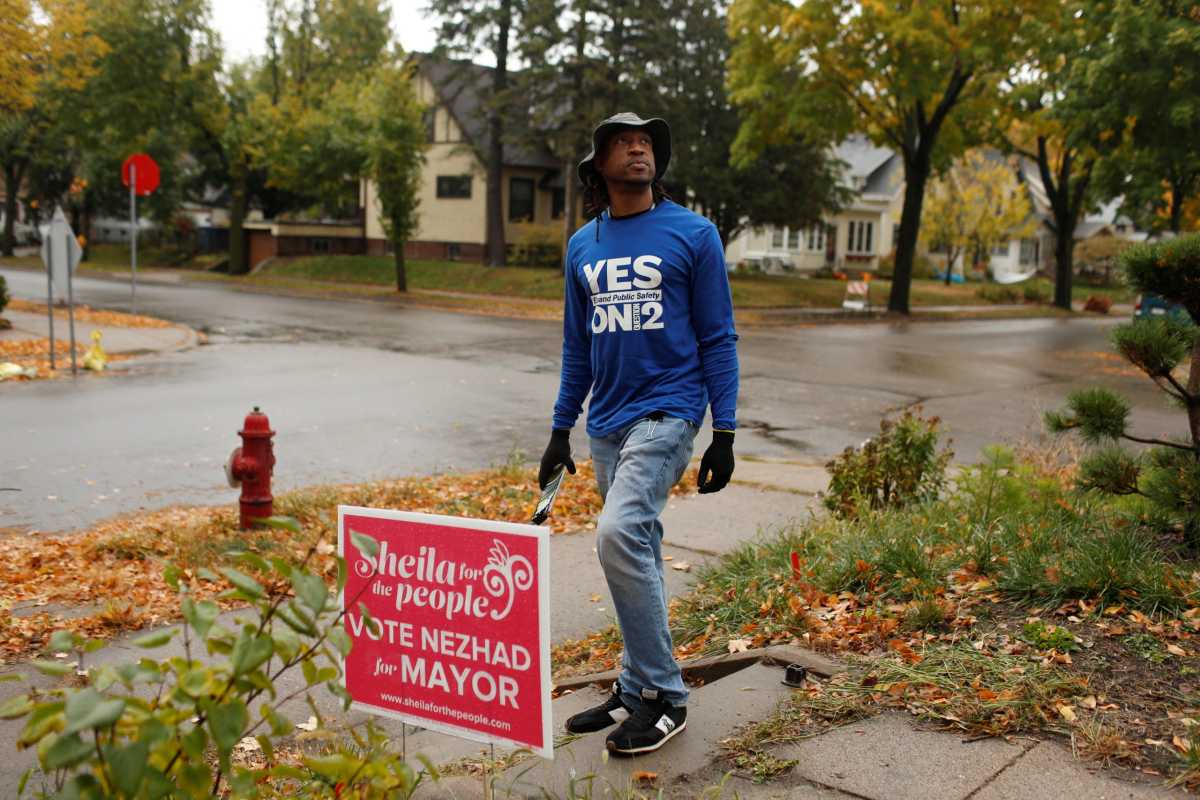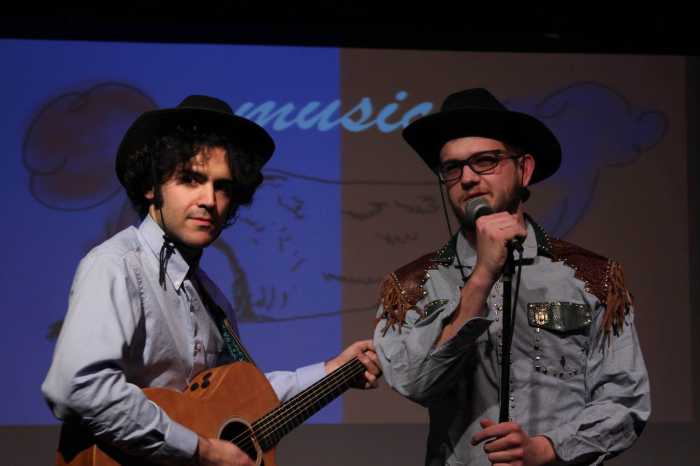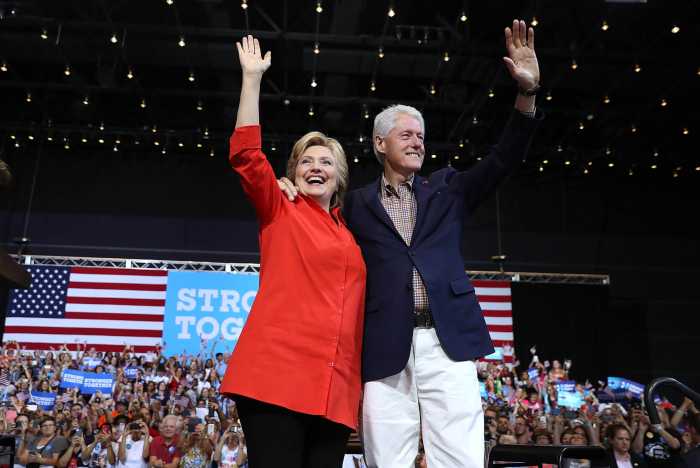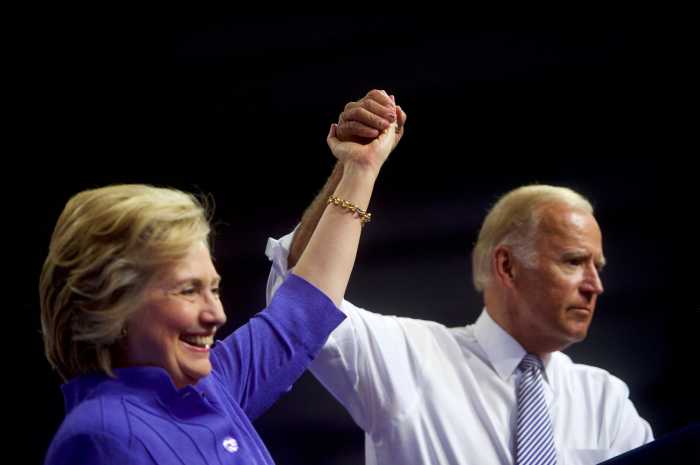By Brad Brooks
Angela Harrelson points toward a blue angel painted on the pavement, marking the spot where a Minneapolis police officer murdered her nephew George Floyd and ignited a national police reform movement.
“If a mental health worker or a social worker had been with the police the day my nephew died right here, he might very well still be alive today,” Harrelson said. “I don’t want to abolish the police, but we need to do something different.”
On Tuesday, Minneapolis voters get to decide just how different their city’s approach to policing should be. A ballot question asks residents whether they want to replace the police department with a new department of public safety, in the first big electoral test of reform efforts sparked by Floyd’s May 2020 killing.
But even after the outrage over his death and the tense protests that followed, the progressive city is deeply divided over the future of its law enforcement. The split illustrates the tricky calculus around overhauling policing in major U.S. cities, as residents fear for their safety amid crime spikes and Democratic politicians worry about Republicans weaponizing the issue in next year’s congressional elections.
Minneapolis Police Chief Medaria Arradondo opposes the measure. Mayor Jacob Frey, who is seeking reelection on Tuesday, is also against it. Neither responded to requests for comment from Reuters.
Conversations with dozens of voters cutting across racial and socio-economic lines in Minneapolis in recent days revealed a range of views. Nearly all expressed confusion over what exactly would happen if the proposal is approved.
That is in large part because the particulars of the new public safety department would only be hashed out by the mayor and city council in the months after the vote.
Opponents say the measure would make good on the city council’s threat in the days after Floyd’s death to “defund the police.” They say Minneapolis, with a population of about 430,000 people, needs more officers, not fewer, as it grapples with a crime wave.
Supporters insist police would remain on their jobs, though perhaps in smaller numbers. They say the change would mean approaching safety in a holistic manner, including addressing the root causes of crime before it takes place.
If approved, the department of public safety would create a larger agency that would include police officers as well as mental health professionals, housing and addiction experts, and people trained in de-escalating conflict to respond to 911 calls where an armed officer may not always be needed.
The new department would answer not just to the mayor but also the city’s 13 council members, which supporters say would give residents more influence in how policing is carried out.
“What police have been doing for decades does not work,” said the Reverend JaNaé Bates, with the Yes4Minneapolis campaign that supports creating the new safety department. “We want the city to have the nimbleness to match its safety needs with the resources available.”
‘BIG EXPERIMENT’
Homicides in Minneapolis were up more than 17% through the end of September, compared to the same period in 2020. Robberies and aggravated assaults also have increased.
More than 200 police officers have left the force since Floyd’s murder. Police who remain have in many ways stopped engaging with the community, for fear of being involved in another flashpoint case, a recent Reuters investigation found.
North Minneapolis, a poorer area where more Black residents live, has seen the brunt of the violence. Nearly half of all murders in the city have taken place in Precinct 4, where residents complain of nights filled with shootings, carjackings and out-of-control petty crime.

“This entire thing is a white, progressive movement, man,” said Teto Wilson, a Black barber shop owner in north Minneapolis, referring to efforts to replace the police department. “They’re trying to turn us into some damn big experiment.”
Like other residents on the north side who spoke with Reuters, Wilson said police reform is needed desperately – but within the current structure. He said those living with daily violence don’t have the luxury to try drastic new approaches.
In the Folwell neighborhood north of Wilson’s barber shop, Anna Gerdeen, who is white and described herself as a progressive director of a community not-for-profit, said she might normally support more radical policing reforms. But not now, while she and her 11-year-old son feel under siege inside their own home. She will vote against the creation of a new department.
“My neighbor’s house got hit with bullets a couple months ago. I can’t let my son play outside in the yard anymore,” Gerdeen said. “As a mother, I just can’t risk any more chaos.”
‘LIVING HELL’
Supporters of creating a new public safety department say such violence makes clear the need for a new strategy. They say advocates have tried for decades to get reforms passed to make policing more equitable and to bring more safety to poorer neighborhoods but have repeatedly failed.
Minnesota Attorney General Keith Ellison, a progressive Democrat, oversaw the prosecution of former police officer Derek Chauvin, who pinned Floyd’s neck to the ground for more than nine minutes with his knee. Ellison said now is the time for true change.
“If we’re saying that George Floyd could be murdered on the streets of this town … and we’re not willing to take any institutional change to address that, to me that’s sad, and it’s a little scary,” said Ellison, who lives in Minneapolis. “My hope is that we actually respond to what’s happening here, in a way designed to prevent it from happening again.”
Back on the street where Floyd was killed in south Minneapolis, Bridgette Stewart and other members of a community watch group had just returned from the scene of a drive-by shooting where three people were injured last Tuesday. The group, Agape Movement, was there to act as a bridge between family of the victims, community members and law enforcement, to ensure nothing escalated into more violence.
That is the type of work Stewart said needs to happen on a citywide scale, and that she said could only happen if the new public safety department is approved.
“This is our vision, that we can all work together for public safety,” she said. “Because if we all can’t get along and get this work done, we’re going to be stuck right where we’re at – in a living hell.”
Reuters



























